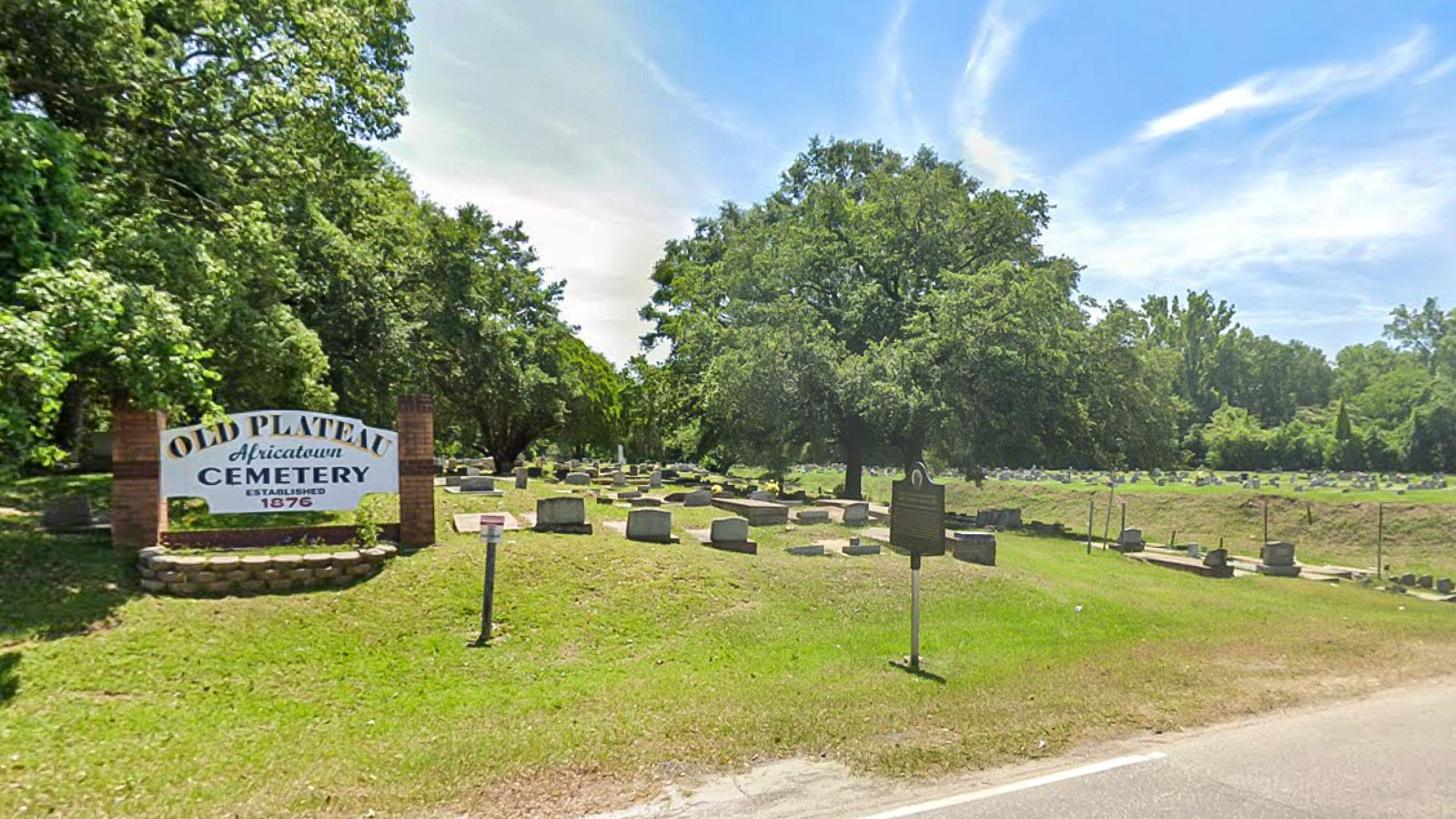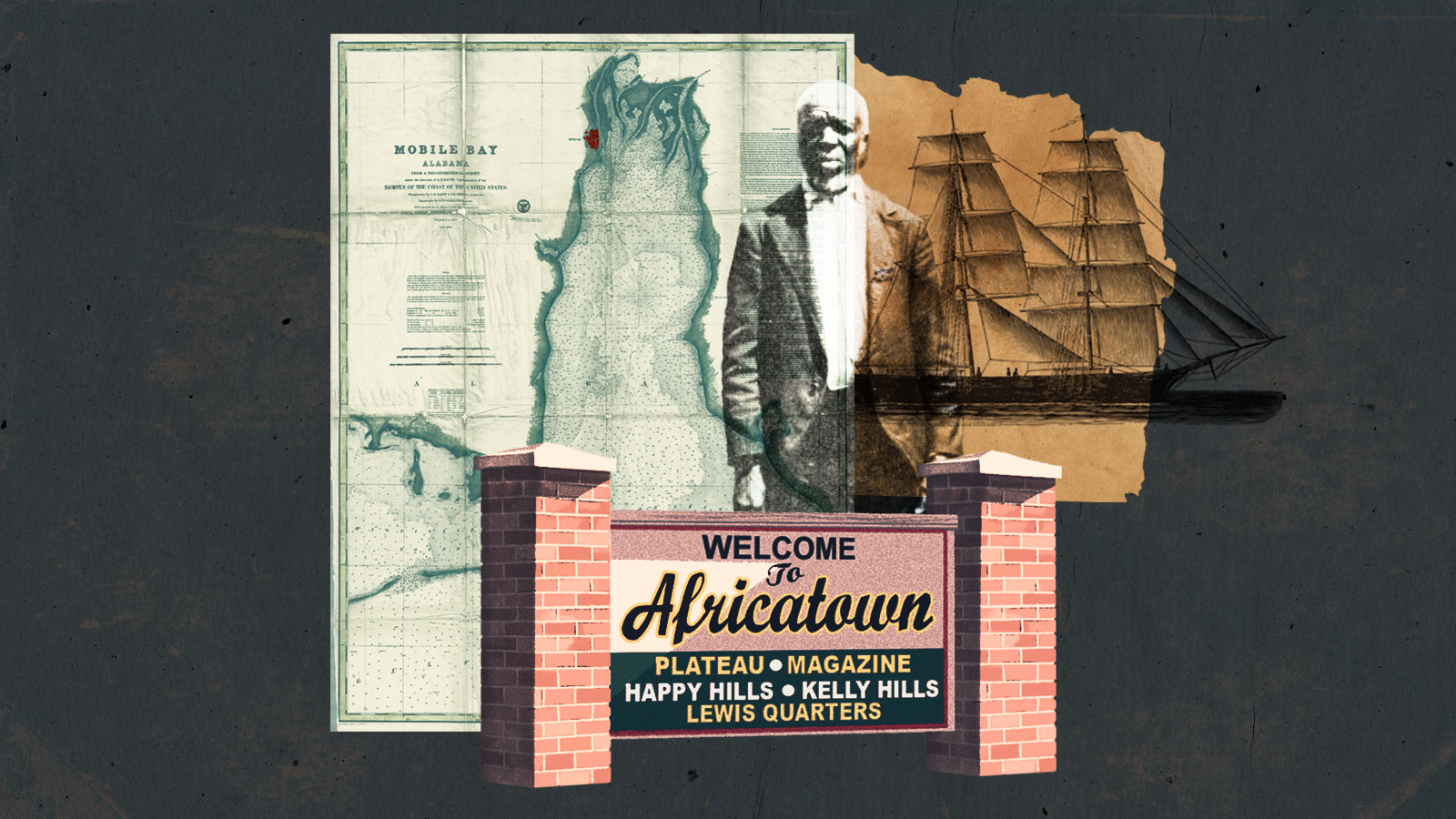This story is adapted from the book AFRICATOWN, which was published this week by St. Martin’s Press.
Four years ago, an announcement from the Alabama Gulf Coast shocked the world: The wreckage of the Clotilda, the last slave ship ever brought to the U.S., had been identified in the muddy depths of the Mobile Delta. The slavers had burned the ship after its 1860 voyage to erase evidence of their crimes, but those they took captive kept their memories alive in Africatown, a neighborhood at the edge of Mobile that they established after their emancipation. Those survivors included Cudjo Lewis, who lived to be nearly 100 — long enough to share his experiences with Zora Neale Hurston, who interviewed him for what became her book Barracoon.
Africatown is the only American community established by West Africans who survived the brutality of the Middle Passage, a distinction recognized by its inclusion in the National Register of Historic Places. Descendants of the voyage still live in the neighborhood today, though its population is a fraction of what it once was.
Throughout its history, Mobile’s white power brokers have treated Africatown as an industrial dumping ground. For years it was hedged in by two paper factories that released vast amounts of pollution into the air and waterways. It’s now surrounded by other industrial businesses, including a chemical refinery and an asphalt plant. Many residents believe there is a cancer epidemic. With help from activists, some are trying to transform the neighborhood into a destination for heritage tourism, which they see as the only hope for preserving it. Despite the national attention Africatown has received since the Clotilda’s discovery — which culminated in the release of the recent Netflix documentary Descendant — the community’s very existence remains in peril.
In many ways, the environmental harm in Africatown mirrors what’s happened in other communities of color, from ‘Cancer Alley’ in Louisiana to ‘Asthma Alley’ in New York City’s South Bronx. For Americans, race is one of the most powerful predictors of exposure to pollution. Because of its long and dramatic history, Africatown provides a unique window for understanding how these inequities have developed over time.
In particular, Africatown’s history reveals just how far into the past American environmental racism stretches, even though the term itself didn’t enter the lexicon until just a few decades ago. It was the Progressive Era at the turn of the 20th century, which coincided with the early days of Jim Crow in the U.S. South, when something that looks distinctly like the environmental racism of later years first took hold — and when the mechanisms were established to reproduce it for decades to come.
By and large, the dawn of the 20th century was characterized by campaigns for more professional government, cleaner cities, better schools, and improved public health. Though many national commentators portrayed these reforms as limited to the country’s northern industrial heartland, Southern cities from Dallas to Atlanta also gave rise to Progressive movements of their own. But theirs was a Progressivism, in the words of historian C. Vann Woodward, “for white men only.” Between 1890 and 1908 — the period when modernization campaigns first started up — most Southern states also enacted policies that stripped African American men of their voting eligibility. Disfranchisement severely limited the avenues available for Black communities to stand up for their rights. Nowhere was this more true than in Mobile.
As of the 1890s, Mobile had failed to regain its pre-Civil War position as one of America’s largest port cities. Thanks to the new national railroad network, much of the cotton that had once traversed Mobile’s docks was now being diverted to other ports. The city’s population also stagnated, leaving it smaller than New Orleans, Atlanta, Savannah, Charleston, Richmond, Nashville, and Memphis. Erwin Craighead, the editor of the Mobile Register newspaper and the city’s most prominent booster at the time, admitted in 1902 that Mobile had “fallen behind in the race to the front rank of Southern cities.” Reading his editorials, which constantly predicted that Mobile was on the verge of “greatness,” it’s easy to see the origins of the city’s derisive nickname among locals: the City of Perpetual Potential.
Nevertheless, Mobile was modernizing. Electricity was introduced by a private company between 1893 and 1906. Craighead boasted in 1902 that sewers had been installed “with a completeness not found elsewhere,” and for the first time the city assigned 20 men to clean streets, gutters, and drains on a daily basis. It also purchased one waterworks system and built another, giving the majority of residents something they’d never had before: a dependable supply of clean water. The city’s public parks were improved and expanded, and its first ballpark opened in 1896. By 1915, roughly 40 miles’ worth of roads had been paved, replacing the streets of dirt and oyster shells. Most important for the city’s growth was the expansion of electric streetcars. As commuting became easier, new neighborhoods flourished around Mobile’s periphery.
But the expansion of plumbing, sewage, and paved roads generally stopped at the borders of the city’s Black neighborhoods. As a result, Mobile’s Black wards were effectively left in the 19th century. Dr. Charles Mohr, the city health officer, described the results in 1915: The Black wards had come to be seen as “the least desirable” in Mobile, “far removed from the better residential districts” and “unfrequented except by those who, from choice or necessity, have their homes there.”
While the examples of environmental racism that are most familiar today involve communities of color being actively polluted — whether by factories, landfills, or exhaust from highway traffic — the kinds of planning decisions that Mobile and countless other Southern cities made in those years resulted in neglect and underdevelopment that could be just as deadly.

The experience of Clotilda survivor and Africatown founder Cudjo Lewis suggests the personal devastation that this could cause. When Zora Neale Hurston interviewed him in 1927 and 1928 (starting when she was an anthropology student at Barnard College), Lewis described a rapid and rather shocking succession of deaths in his family.
Lewis’ wife and all six of their children died between 1893 and 1910. At age 15, his daughter became bed-ridden with a sickness that was impervious to the doctor’s medicine, and she died soon afterward. The death of Lewis’ son Jimmy unfolded just as quickly and mysteriously. His wife, Celia, passed away in 1908 without any symptoms that were obvious to Lewis. And his son Aleck died the following month, though Lewis didn’t say how.
Clues about what might have happened can be found in health reports that were written during the same period, which are on file at Alabama’s state archives in Montgomery. It was evident to Mohr and other local doctors — if not to Mobile’s political leaders — that the city’s Jim Crow planning strategy posed serious threats to public health everywhere. In 1913, two doctors took blood samples from residents of Plateau, a subset of Africatown, and concluded that 3 percent of residents had latent cases of malaria. One physician wrote that “the colored race” was contributing heavily to the spread of malaria throughout Mobile County, as it was found in “proportionately greater” frequency in their ranks than among whites. The doctor recommended mosquito eradication and drainage programs for Africatown and the surrounding area.
Statistics from 1914 also show that Mobile’s Black residents were dying from the disease at almost four times the rate of white residents. Other illnesses were lurking in Black neighborhoods as well: That year, 112 Black residents within the city died of tuberculosis (to say nothing of those outside the city limits), compared to 55 white residents — despite whites making up 56 percent of the broader population. Another 39 Black Mobilians died from pneumonia, 17 from pellagra (a disease associated with malnutrition), and 16 from influenza. In all these categories, the mortality rates for white residents were much lower. There’s little question that the Lewis family fell victim to this larger phenomenon.
Dr. Mohr warned in 1915 that unsanitary conditions in Black neighborhoods posed a “constant menace to the white community.” Belatedly, the city did extend sewage and other services to its Black wards. But even then, Africatown was left out, because it was outside the city — and political leaders had no interest in annexing the Black neighborhoods that dotted Mobile’s periphery.
White authorities also took measures to make sure the racial power balance that cemented these injustices would not be disrupted. The changes they made on this front would be felt most acutely by the generations that succeeded Cudjo Lewis and Africatown’s other founders.
Mobile’s electoral districts had long been gerrymandered to guarantee that Black citizens didn’t make up a voting majority in any given ward. Craighead, the newspaper editor, was frank about this in a 1907 editorial: “It is a well-known historical fact,” he wrote, that when the districts were drawn in 1879, the point was to “preserve white supremacy” in government.
However, in 1910 there was a push to do away with electoral districts altogether. Businessmen, represented by the local chamber of commerce, wanted to restructure city government, replacing the city council with a city commission. Instead of two dozen or so leaders, there would be only three, and in all likelihood they’d be businessmen or attorneys. Cities across the nation were making the same switch. The idea was to refashion administrations in the image of corporate America, so they’d be less prone to patronage and more concerned with sound budgeting. Craighead championed the proposal, saying Mobile needed a “business administration.” The “city with the best government,” he predicted, “will attract the most new people.” Montgomery and Birmingham had already made the conversion.
After a lobbying campaign in the state legislature, the change was made in 1911. Under the new system, the city elected its commissioners at large, rather than on a ward-by-ward basis. For city leaders, this was an insurance policy: It meant that as long as conservative whites made up more than half the city’s total vote share, no Black candidate would ever be elected to the commission. (Mobile’s city commission wouldn’t be abolished until the 1980s, when the issue went to the U.S. Supreme Court and the system’s racist and unconstitutional origins came into full public view.)
In the decades after the Progressive Era, environmental racism in Africatown would only get worse. Two of the largest paper factories in the world were installed on either side of the neighborhood, emitting untold amounts of chloroform, hydrochloric acid, and other pollutants into the air and the waterways. Ash from the paper mills blanketed residents’ vegetable gardens and ate through their cars and roofs. Many residents living there today think the pollution created a cancer epidemic. At least one of Cudjo Lewis’ descendants — his great-great-grandson, Garry Lumbers, who grew up in the house Lewis built — has survived the disease.
It’s unlikely that anyone summed up the legacy of the Progressive Era in Alabama better than John Knox, a wealthy corporate lawyer who was active in state politics. In November 1901, when he was trying to build support for the new state constitution that had been drafted that summer, Knox addressed a crowd of white voters near Tuscaloosa. “It is as if we are going to build a great house,” he said, “a house in which we are all to live — not for a few years, but perhaps as long as we do live — and not only those of us that are here, but our children and our children’s children.” The idea, he said, was to consolidate political power “where God Almighty intended it should be — with the Anglo-Saxon race.”
Many of the racist policies established in those years have since been overturned, and today there are remarkable efforts underway to rejuvenate Africatown’s economy with heritage tourism. These projects are being led by those who grew up in the neighborhood, including some who trace their lineage back to the Clotilda. Descendant, the Netflix documentary, has helped bring an influx of resources and attention. But if progress has been slow and arduous — and it has — that’s partly because the roots of these problems run extraordinarily deep.
From AFRICATOWN: America’s Last Slave Ship and the Community It Created. Copyright © 2023 by the author and reprinted with permission of St. Martin’s Publishing Group.



